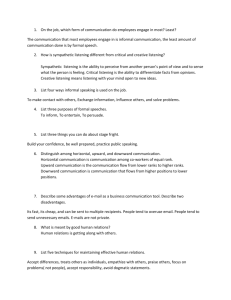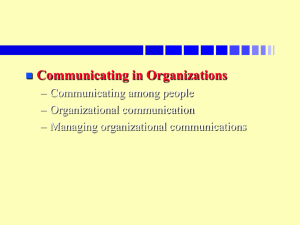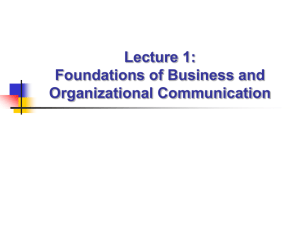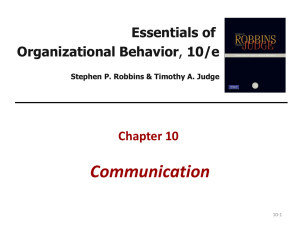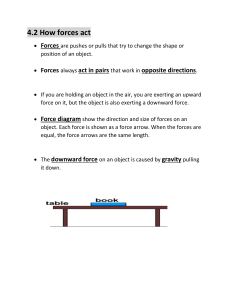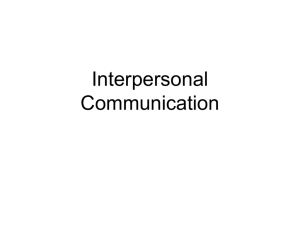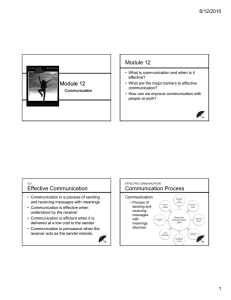Communication Key Terms - Chapter 11 Definitions
advertisement
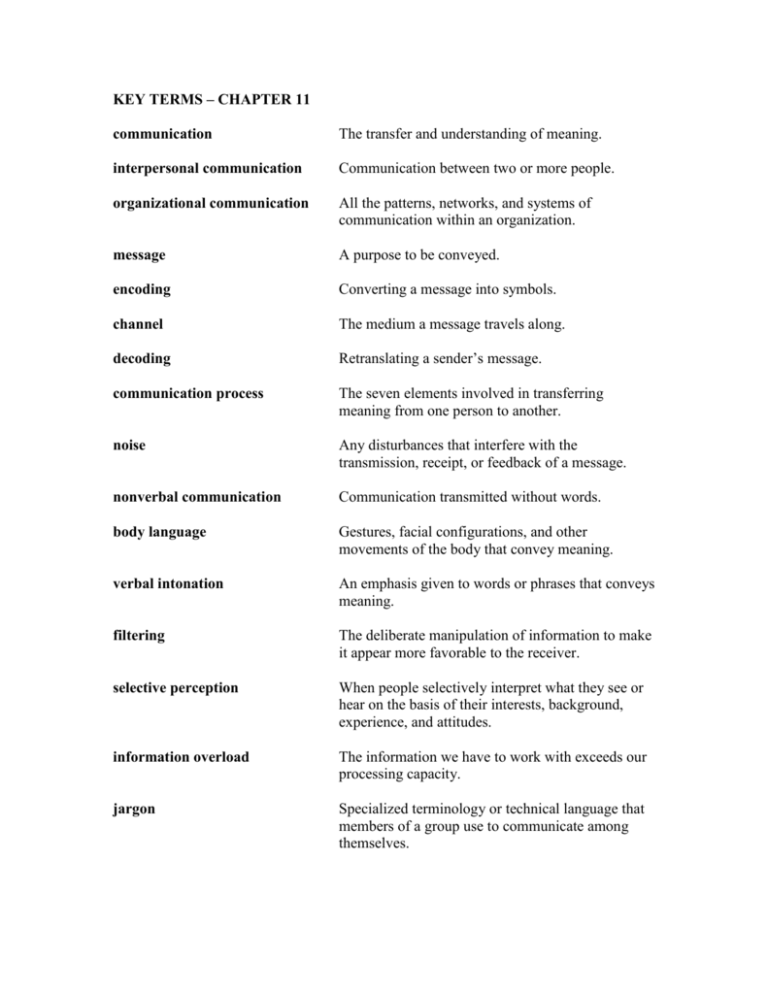
KEY TERMS – CHAPTER 11 communication The transfer and understanding of meaning. interpersonal communication Communication between two or more people. organizational communication All the patterns, networks, and systems of communication within an organization. message A purpose to be conveyed. encoding Converting a message into symbols. channel The medium a message travels along. decoding Retranslating a sender’s message. communication process The seven elements involved in transferring meaning from one person to another. noise Any disturbances that interfere with the transmission, receipt, or feedback of a message. nonverbal communication Communication transmitted without words. body language Gestures, facial configurations, and other movements of the body that convey meaning. verbal intonation An emphasis given to words or phrases that conveys meaning. filtering The deliberate manipulation of information to make it appear more favorable to the receiver. selective perception When people selectively interpret what they see or hear on the basis of their interests, background, experience, and attitudes. information overload The information we have to work with exceeds our processing capacity. jargon Specialized terminology or technical language that members of a group use to communicate among themselves. active listening Listening for full meaning without making premature judgments or interpretations. formal communication Communication that follows the official chain of command or is required to do one’s job. informal communication Communication that is not defined by the organization’s structural hierarchy. downward communication Communication that flows downward from a manager to employees. upward communication Communication that flows upward from employees to managers. lateral communication Communication that takes place among any employees on the same organizational level. diagonal communication Communication that cuts across work areas and organizational levels. communication networks The variety of patterns of vertical and horizontal flows of organizational communication. grapevine The informal organizational communication network. e-mail The instantaneous transmission of written messages on computers that are linked together. instant messaging (IM) Interactive real-time communication that takes place among computer users logged on the computer network at the same time. blog An online journal that usually focuses on a particular subject. wiki A type of Web site that allows anyone visiting it to add, remove, or otherwise edit the content. voice mail A communication system that digitizes a spoken message, transmits it over a network, and stores the message on disk for the receiver to retrieve later. fax Communication through machines that allow the transmission of documents containing both text and graphics over ordinary telephone lines. electronic data interchange (EDI) A way for organizations to exchange standard business transaction documents using direct computer-to-computer networks. teleconferencing Communication system that allows a group of people to confer simultaneously using telephone or e-mail group communications software. videoconferencing A simultaneous communication conference where participants can see each other. web conferencing Holding group meetings or live presentations over the Internet. intranet An organizational communication network that uses Internet technology and is accessible only by organizational employees. extranet An organizational communication network that uses Internet technology and allows authorized users inside the organization to communicate with certain outsiders. communities of practice Groups of people who share a concern, a set of problems, or a passion about a topic, and who deepen their knowledge and expertise in that area by interacting on an ongoing basis.
